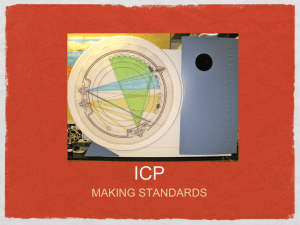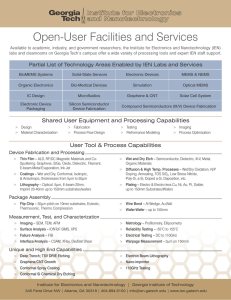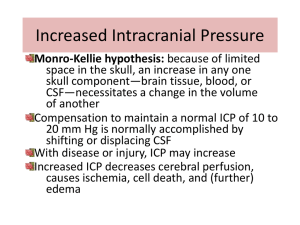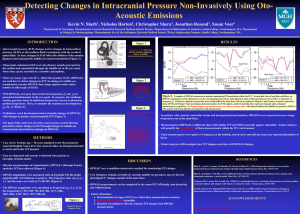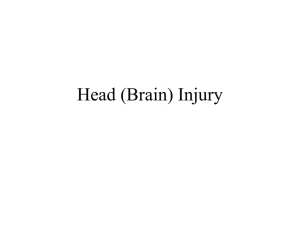jian-pres
advertisement
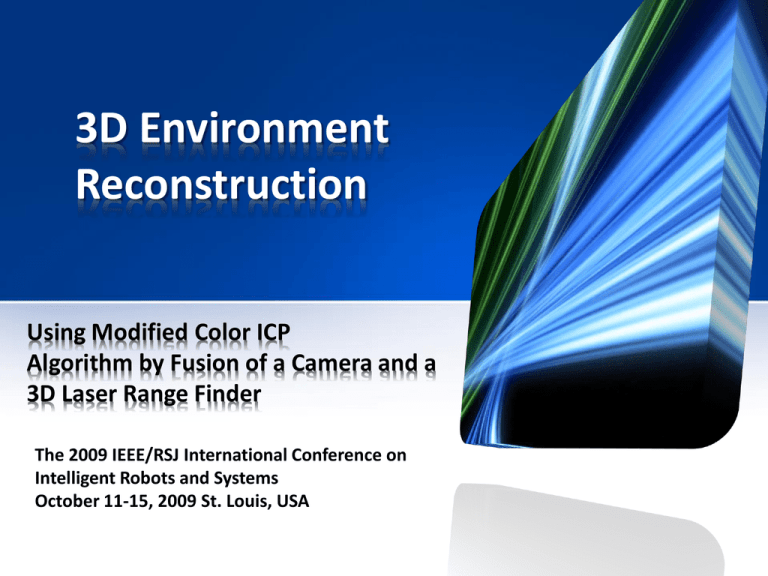
3D Environment
Reconstruction
Using Modified Color ICP
Algorithm by Fusion of a Camera and a
3D Laser Range Finder
The 2009 IEEE/RSJ International Conference on
Intelligent Robots and Systems
October 11-15, 2009 St. Louis, USA
3D Reconstruction Background
Building rich 3D maps of environments is an important
task for mobile robotics, with applications in navigation,
virtual reality, medical operation, and telepresence.
Most 3D mapping systems contain three main components:
1. the spatial alignment of continuous data frames;
2. the detection of loop closures;
3. the globally consistent alignment of the complete data
sequence.
Concept explain
1. Scale-invariant feature transform (SIFT):
Detect and describe local features match in images.
2. Random Sample Consensus (RANSAC):
An iterative method to estimate parameters of a
mathematical model from a set of observed data
which contains outliers.
3. Iterative Closest Point (ICP):
employed to minimize the differences between two
clouds of points.
4. K-D Tree
a space-partitioning data structure to organize points
in a k-dimensional space for range searching and
nearest neighbor searching
Processing of Color ICP
Step of algorithm:
SIFT
RANSAC
Color ICP
Processing of Color ICP, Cont.
SIFT
1. Create image feature match
RANSAC
1. Filtrate “Poisoned Point” and get motion Information
2. Get low accurate position information for the initial
estimation of ICP algorithm
Color ICP
1. Create 3D Environment
2. Get Higher accurate position information
Normal ICP algorithm Introduce
• ICP mathematical expression
S o { p1 ,
, pm}
observe set
S f { q1 ,
, q j}
reference set
E dist , T
m in
R ,T , j 1, 2 ,
m
, n i 1
R p i T q j
2
2
• Euclidean distance
For position:
d position p position q position
px qx
2
py qy pz qz
2
2
Normal ICP algorithm Introduce, Cont.
1.
2.
3.
Get two sets of match S o and S f which include n matches from
RANSAC algorithm.
Transfer the S o to S o' by translation and rotation matrix equation.
Build the KD-Tree and k = 0.
Select a point randomly q f in S f . Find the points which satisfy the
distance (𝛾) constraints between q f and p k' by using the nearest
neighbor search algorithm. Then calculate translation and Rotation
matrix.
𝑚
‖ 𝑅𝛼 𝑝𝑖 + 𝑇 − 𝑞𝑗 ‖22
4.
Calculate the 𝐸𝑘 (𝛼, T) =
5.
If 𝐸𝑘 (𝛼, T) is smaller than previous minimum E(𝛼, T) of match,
update the translation and rotation matrix by using Least squares
method.
k = k +1. Repeat 3) to 4) until search all points.
6.
𝑖=1
Color ICP Algorithm Improve
Improve the normal ICP algorithm :
1. Transfer the RGB to YIQ space. Influence of luminance is decreased.
2. Build the IQ 2D histogram using I and Q channel for faster searching.
Color ICP Algorithm Improve, Cont.
Improve the normal ICP algorithm :
1. Transfer the RGB to YIQ space. Influence of luminance is decreased.
2. Build the IQ 2D histogram using I and Q channel for faster searching.
3. Consider color distance in nearest neighbor search algorithm.
4. Color dynamic range can compress data size.
𝑑color = ‖𝑝𝑐𝑜𝑙𝑜𝑟 − 𝑞𝑐𝑜𝑙𝑜𝑟 ‖ =
𝑎𝑌 𝑝𝑌 − 𝑞𝑌
2
+ 𝑎𝐼 𝑝𝐼 − 𝑞𝐼
2
+ 𝑎𝑄 𝑝𝑄 − 𝑞𝑄
2
Higher Accuracy Location
• Compare the rotation error graph of SIFT and Color ICP + SIFT
algorithm
• Compare the rotation error graph of ICP and Color ICP algorithm
Time Complexity
• Comparison of searching time to find the closest points
UAV System Structure
Dynamics
Model
Position control
Information
Robust
Controller
Attitude
Information
Inertial
Measurement
Unit algorithm
Motion
Information
Data Fusion
Lower Layer
Vision
Algorithm
Motion
Information
Initial
Motion
Information
Simultaneous
localization and
mapping(SLAM)
Position and
Environment
Information
(Robot
Operating
System)
Path
Planning
Cloud Point Information
10 millisecond
Layer
High accuracy attitude information
And low accuracy position information
100 millisecond
Layer
second
Layer
Higher accuracy position information
References
• D.Lowe, "Distinctive Image Features from Scale-Invariant
Keypoints", January 5, 2004
• T.Lindeberg, "Scale-space theory: A basic tool for analyzing
structures at different scales"
• Jon Louis Bentley, "Multidimensional Binary Search Trees Used for
Associative Searching”, Stanford University 1975 ACM Student
Award
• P. Henry, M. Krainin, E. Herbst, X. Ren, and D. Fox. , ”RGB-D
Mapping: Using Depth Cameras for Dense 3D Modeling of Indoor
Environments“, Proc. of International Symposium on Experimental
Robotics (ISER), 2010
• Lu F and Milios E “Globally consistent range scan alignment for
environment mapping” ,Autonomous Robots 4: 333–349, 1997
3D Environment Reconstruction
Random Sample Consensus (RANSAC)
•
Build a equation between X image and X’ image in the
projective coordinates
kX i 1 H X i
•
1) Randomly selected 5 pairs of match from 𝑋𝑖 image and
𝑋𝑖−1 image to calculate H and K matrix.
•
2) Calculate the distances between from another pairs of X
image and 𝑋𝑖−1 image through the equation which does not
include the set of 5 pairs points . If the distance is less than
a threshold value, the point will be added to the “inliers”
set.
•
3) Repeat (1) and (2) step N times. Count the number of
image feature points match for each time. Select the largest
number of inliers point in that group. Use the least squares
method to update the transformation matrix H.
KD-Tree Introduction
x
y
x
y
Best-Bin-First(BBF) algorithm


